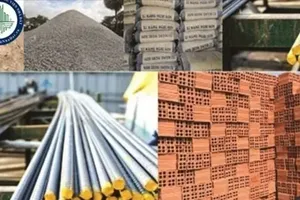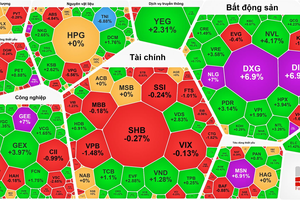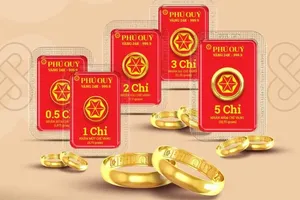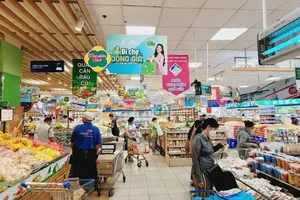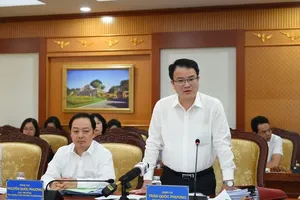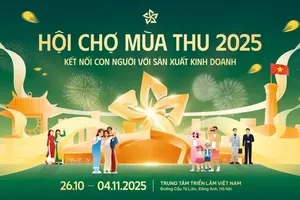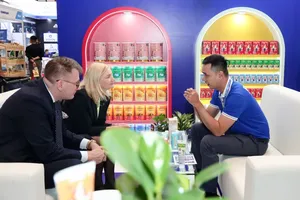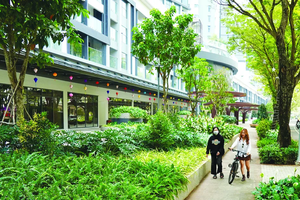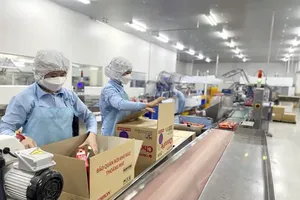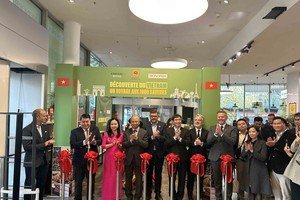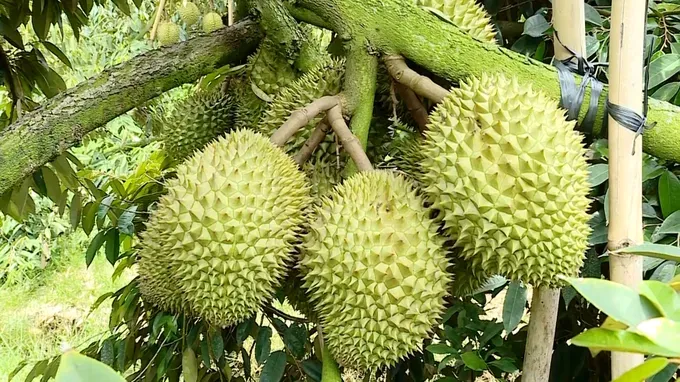
Standing amidst a vibrant sea of green seedling trays, Nguyen Van Be Ba, the owner of a plant nursery in Cho Lach Commune with over 20 years in the business, barely looks up. His hands move deftly, pruning plants as he speaks.
“I probably ship out around 7,000 plants a month,” he explains with a smile. “During peak times, that number can surge to over 10,000. This year, the market’s really favoring the Ri6 durian and the red-fleshed jackfruit; we honestly can’t produce them fast enough to meet all the orders.”
According to Mr. Be Ba, the profit margin on a single seedling is relatively modest, with just a few hundred to a few thousand VND (US$0.01-$0.08). However, the sheer volume, regularly hitting tens of thousands of units monthly, allows growers to rake in tens of millions of VND (potentially $400-$800 or more). For the last few years, the seedling business has been thriving. It’s reported that many households are even investing heavily in expanding their nursery areas, all just to keep pace with the surging market demand.
This lively atmosphere isn’t just confined to large nurseries; the collection and transfer points are buzzing with equal intensity. Take the Cai Mon Junction area, known as the seedling hub of Vinh Thanh Commune as an illustration. Here, buyers flock from numerous provinces to inspect the stock, negotiate prices, and ink contracts.
For Tang Thi Cam Nhung, a local from Cho Lach Commune, the scene is familiar. “A lot of customers are showing significant interest in bonsai ornamentals, miniature fruit trees, and some of the newer, unconventional graft styles,” she notes. “They prefer to come here, see the plants with their own eyes, and hash out a price right in the garden.”
Many of these transactions, she adds, are concluded in just a matter of minutes. It creates a perpetually dynamic environment in the nurseries, where staff are simultaneously tending to the plants and managing the steady flow of customers.
The reputation of this area pulls traders from all over. Nguyen Van Lam, a trader hailing from An Giang Province, confirms he makes the trip down to Cho Lach every year to source his inventory. “The seedlings here have been famous for ages,” he says. “The quality is remarkably consistent, and the survival rate is high, which means farmers don’t suffer as much loss when planting.”
He elaborates on his own business: “I primarily stock up on durian, green-skinned pomelo, and honey orange – thousands of plants each trip. Sometimes, right after loading up, I’ll head straight for the Central region. By the time I get there, I usually sell out completely.”
Statistics reveal that, on an annual basis, the communes of Cho Lach, Vinh Thanh, Phu Phung, and Hung Phu Trung collectively supply approximately 20 million seedlings of various kinds to the market. Unsurprisingly, the dominant share of this volume consists of key fruit varieties like durian, green-skinned pomelo, jackfruit, mango, orange, and mandarin. This immense output has firmly established these localities as the “heart”" of Vinh Long’s entire seedling industry, playing a crucial role in supplying quality stock to the entire Mekong Delta region.
Local growers aren’t just sticking to traditional reproduction methods. In recent years, the agricultural community within Vinh Long’s seedling and ornamental flower center, which includes the communes of Cho Lach, Vinh Thanh, Phu Phung, and Hung Khanh Trung, has been boldly venturing into innovation. They are reportedly applying advanced scientific knowledge to crossbreed and graft new varieties, all aimed at creating plant lines that boast superior productivity, enhanced quality, and greater resilience.
Nguyen Thanh Son, owner of the Thanh Son seedling facility, is a key innovator in Phu Phung Commune, having created several popular new breeds. He highlights his Thanh Son turmeric jackfruit, noted for large fruit and excellent yield, where “both the flesh and the fibers can be dried and packaged.”
Beyond jackfruit, Mr. Son developed the Tai Loc mango. This variety features vibrant yellow skin, a small seed, a unique aroma, and resistance to fruit flies. Its thick skin makes it “ideal for export” as it transports well. He also crossbred a Thanh Son longan, which has paper-thin skin, tiny seeds, yields two crops annually, and is popular with foreign tourists.
“Customers are incredibly discerning these days,” Mr. Son notes, explaining they demand specific characteristics, yield, and flavor. This drives his team to constantly innovate, sometimes taking a year to perfect a new variety. The payoff? “They sell like hotcakes.”
Similarly, Nguyen Thanh Phong also from Phu Phung Commune has successfully cultivated his Tieu Long durian variety. This breed, he says, features rich yellow flesh, small seeds, and a flavor profile that’s every bit as delicious as its pricey imported counterparts. “It’s been through four years of trials,” he reports. “The tree adapts well to the local soil and is impressively drought-tolerant. It’s poised to become one of our flagship varieties.”
Meanwhile, at Le Van Thao’s production facility in Vinh Thanh Commune, the focus is on a new Indonesian-origin red-fleshed jackfruit. “I propagate about 300,000 of these plants annually,” Mr. Thao states. “We’re about to supply a batch to Cambodia for a 10-hectare trial project. If that’s successful, they plan to expand to 800 hectares, which would require around 160 million plants.”
Mr. Thao also emphasized that, across the nurseries, the technical standards for grafting, root treatment, and pest control are implemented quite rigorously. Before any seedling is sold, it’s meticulously classified and clearly labeled, documenting its origin, the exact date of its grafting or cutting, and its specific variety name.
Vice Chairman Tran Huu Nghi of the Cho Lach Commune People’s Committee affirmed the trade’s importance. “This seedling profession has become the unique brand of our locality,” he said. The commune is focused on helping farmers enhance their nursery and grafting techniques, encouraging the use of “high-quality parent stock.” He added they are coordinating with the Vinh Long Department of Agriculture and Environment to inspect and manage seed quality, vital for bolstering the craft village’s reputation. “Cho Lach seedlings are also exported to Cambodia. Because of that, quality has to be our number one priority.”
Looking ahead, Director Lam Van Tan of the Vinh Long Department of Agriculture and Environment, stated that the agricultural sector will continue to elevate the quality of seedling and ornamental flower production. The strategy, he said, involves transferring and applying scientific and technological advancements to meet the market’s diverse demands.
Furthermore, there’s a concentrated push to feature these seedlings on e-commerce platforms, aiming to boost sales both domestically and for export. The end goal, according to the director, is to steer the region’s traditional seedling production industry toward sustainable, long-term development.


